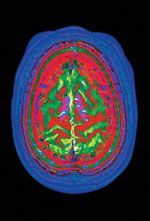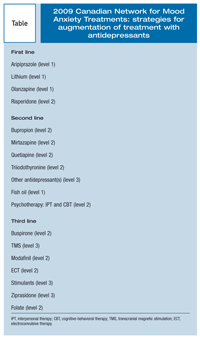Publication
Article
Psychiatric Times
Psychopharmacology: Controversies, Breakthroughs, and Tips
Author(s):
Available treatments are so robust that nearly one-third of patients with major depression will achieve full clinical remission with monotherapy.

The new decade brings exciting advances with all their attendant controversies to psychopharmacology. In this introduction to the Special Report, I review the controversies and breakthroughs and provide tips on how breakthroughs such as treatment customization can be used in clinical practice.
Controversies
In the February 27, 2010, edition of The Wall Street Journal, Edward Shorter, PhD,1 of the University of Toronto wrote, “Patients who seek psychiatric help today for mood disorders stand a good chance of being diagnosed with a disease that doesn’t exist and treated with a medication little more effective than placebo.” Shorter added, “American psychiatry is headed in . . . [a] direction [of] defining ever-widening circles of the population as mentally ill with vague and undifferentiated diagnoses and treating them with powerful drugs.”
Meanwhile, in the February 10, 2010, edition of The New York Times,Benedict Carey2 wrote, “Experts gave the American Psychiatric Association, which publishes the [DSM] manual, predictably mixed reviews. Some were relieved that the task force working on the manual-which includes neurologists and psychologists as well as psychiatrists-had revised the previous version rather than trying to rewrite it.”
Which author is correct? Is our field moving in a direction of vague and undifferentiated diagnoses, as Shorter argues, or is the jury still out on the best way to define mental illnesses? Are those in the field taking a collective deep breath, as Carey indicates, before embarking on new ways of defining psychopathology?
Anyone who read the editorial “2009 in Review” in the December 2009 issue of The American Journal of Psychiatry knows that Carey has a better grasp of where the field is headed. We are poised to make dramatic breakthroughs in the diagnosis and treatment of psychiatric disorders using techniques that are borrowed from molecular biology, genomic research, neuroanatomy, basic cognitive neuroscience, brain imaging, and psychopharmacology research and that are integrated with clinical data as codified in DSM-IV (soon to be DSM5).
There may be controversy over the best way to measure clinical psychopathology (ie, should we rely on a categorical diagnostic system such as DSM-IV, use a dimensional approach like that used in the UCLA Family Study of Schizophrenia–related personality disorders,3 or should we employ a combination of the two?). However, there is no question that the evolution of psychiatric diagnosis into the mainstream of medical diagnosis will require an integration of clinical psychopathology with phenotypes based on molecular biology, genomic science, cognitive neuroscience, brain imaging, and psychopharmacology outcome research.
A stress variable composed of environmental factors that begin in utero (eg, malnutrition, infectious disease, immunological incompatibilities, psychological abuse, and physical trauma) and span an individual’s lifetime coupled with a family psychopathology variable will most likely be factored into these complex models. This hardly matches the world of “vague and undifferentiated diagnoses” painted by Shorter.
What does this have to do with psychopharmacology? Psychopharmacology in the 21st century will be aimed at phenotypes that define subgroups of mental illness by genomic fingerprint, RNA fingerprint, neurocognitive function, brain imaging, stress factors, familial aggregation of psychiatric disorders, and “good old DSM categories.” Let us take a look at some of the exciting progress that is being made.
Breakthroughs
Sibille and colleagues4 from the University of Pittsburgh and the Universit Franois-Rabelais, Tours, France, have conducted a large-scale study of gene expression of RNA from the amygdala of patients in whom DSM-IV major depression was diagnosed and who have a family history of major depression. The researchers also examined the large-scale gene expression of RNA from the amygdala of a mouse-model of depression.
The examination of gene expression in mice and humans allowed for the bidirectional confirmation of a phylogenetically conserved molecular signature of major depression, as expressed by RNA transcripts. The expression of specific RNA markers was reversed by fluoxetine administered in the mice. A network of 32 genes was identified, and it suggested that oligodendrocytes were negatively affected while neuronal structure and function were enhanced in the amygdala. This was theorized to be a reciprocal effect.
The study undertaken by Sibille and colleagues is an example of translational research at its best; it integrates genomic fingerprint, RNA fingerprint, stress factors, familial aggregation of psychiatric disorders, and DSM categories with medication responsiveness. One can imagine a day when a clinician, faced with a patient who has major depression, orders a genomic scan to identify single nucleotide polymorphisms that have resulted in an altered expression of a network of genes that underlie amygdala function. This genomic fingerprint combined with a familial his-tory of major depression and an environmentally imposed alteration in circadian rhythms (eg, a college student living in a dorm) will predict response to a certain medication. On the other hand, major depres-sion in patients who lack these characteristics will be predicted to be unresponsive to the same medication but instead be responsive to other treatments.
In another study, Harmer and colleagues5 from Warnerford Hospital and the department of psychiatry at the University of Oxford in the United Kingdom found that patients in whom DSM-IV major depression was diagnosed and who also had a phenotype defined by a negative bias in emotional information processing experienced amelioration of the negative bias 3 hours after receiving acute treatment with reboxetine, a selective norepinephrine inhibitor. The improvement in emotional processing was independent of changes in classic depression-rating scales. If this early response is found to predict the long-term effectiveness of antidepressants, not only can it be used to accelerate drug development but it presents another phenotype to be integrated into studies such as the one conducted by Sibille and colleagues. This study helps illustrate the importance of identifying phenotypes that go beyond DSM categories.
Addressing controversies and innovation in clinical practice
The quality of scientific evidence that supports the effectiveness of pharmacotherapies is robust and equal to that of treatment modalities in many other branches of medicine. The disorders that we treat may be umbrellas for many subtypes that will one day respond to individualized treatments. Until that day comes, evidence-based guidelines, such as the recently published 2009 Canadian Network for Mood and Anxiety Treatments (CANMAT) clinical guidelines for the management of major depressive disorder in adults,6 provide the practicing clinician with a wealth of data that support the effectiveness of pharmacotherapy and nutraceuticals in the treatment of depression. The Cochrane Collaboration is another source of evidence-based reviews discussing the effectiveness of various therapies.7

For now, available treatments are so robust that nearly one-third of patients with major depression will achieve full clinical remission with monotherapy. For the two-thirds whose condition does not respond to monotherapies, effective augmentation strategies are available. We can assure our patients that our treatments are well validated and that the scientific basis for behavioral disorders is on its way.
The CANMAT guidelines, for instance, compiled data to determine the most appropriate course of action and are an excellent illustration of how evidence-based guidelines are created. The Tablelists a summary of CANMAT’s augmentation strategies in treatment-resistant depression. Treatments were ranked (eg, first, second, or third line) on the basis of their therapeutic effectiveness and tolerability. The therapeutic effectiveness was judged by the level of evidence supporting a treatment: level 1 treatments had at least 2 randomized controlled trials (preferably placebo-controlled, and/or a meta-analysis with narrow confidence intervals supporting their effectiveness) with adequate sample sizes; level 2 treatments had at least 1 randomized controlled trial with adequate sample size and/or meta-analysis with wide confidence intervals supporting their effectiveness; and level 3 treatments were supported by nonrandomized controlled prospective studies, case series, or high-quality retrospective studies.
A whole new world of options and answers
So, to paraphrase Dr Shorter with a twist: the scientific evidence demonstrates that patients who seek psychiatric help today for mood disorders stand a good chance of having a diagnosis of a syndrome treatable with effective medication such that fully one-third of patients treated in this manner will enjoy full remission of symptoms after 1 medication trial.
Indeed, American psychiatry is headed in a direction of redefining mental disorders as mental diseases on the basis of advances in neuroscience. These new discoveries will elucidate the underlying pathophysiology of mental diseases and will lead to the use of powerfully effective drugs for the amelioration of dreadful diseases. The future is bright.
References:
References
1.
Shorter E. Why psychiatry needs therapy.
Wall Street Journal
. February 27, 2010.
http://online.wsj.com/article/SB10001424052748704188104575083700227601116.html
. Accessed March 4, 2010.
2.
Carey B. Revising book on disorders of the mind.
New York Times.
February 10, 2010.
http://query.nytimes.com/gst/fullpage.html?res=9907E3DA1F3DF933A25751C0A9669D8B63&sec=&spon=&pagewanted=print
. Accessed March 4, 2010.
3.
Fogelson DL, Asarnow RA, Sugar CA, et al. Avoidant personality disorder symptoms in first-degree relatives of schizophrenia patients predict performance on neurocognitive measures: the UCLA family study.
Schizophr Res.
2010 Jan 4; [Epub ahead of print].
4.
Sibille E, Wang Y, Joeyen-Waldorf J, et al. A molecular signature of depression in the amygdala.
Am J Psychiatry.
2009;166:1011-1024.
5.
Harmer CJ, O’Sullivan U, Favaron E, et al. Effect of acute antidepressant administration on negative affective bias in depressed patients.
Am J Psychiatry
. 2009;166:1178-1184.
6.
Lam RW, Kennedy SH, Grigoriadis S, et al. Cana-dian Network for Mood and Anxiety Treatments (CANMAT) clinical guidelines for the management of major depressive disorder in adults, III: pharmacotherapy.
J Affect Disord.
2009;117(suppl 1):S26-S43.
7.
Cipriani A, La Ferla T, Furukawa TA, et al. Sertraline versus other antidepressive agents for depression.
Cochrane Database Syst Rev.
2010;(1):CD006117.





















